Best Lower Back Mobility Exercises 2026
Author:
Reviewed by:
(21 years of Oly Lifting experience)
Unlock your full potential by engaging with our experts and community! Have questions about your fitness journey or looking for expert advice on weightlifting techniques? Don’t hesitate — leave a comment below and Zinaida Bondarenko will provide a personalized answer and insights to help you reach your goals.
Torokhtiy is reader-supported. Some links are affiliate links, and we may earn a commission at no extra cost to you. See our disclosure page for details.
Compared to previous generations, the average person today spends less time engaged in physical activity and more time sitting down. As a result, our backs have become more stiff, immobile, and more prone to pain than before.
Today I’m sharing tips and exercises to regain lower back mobility and improve your quality of life.
New generations spend more time sitting down compared to their peers, and the trend is rising. This leads to lower back issues earlier in life than in previous generations. One of the best ways to combat this trend is with regular lower back mobility exercises.
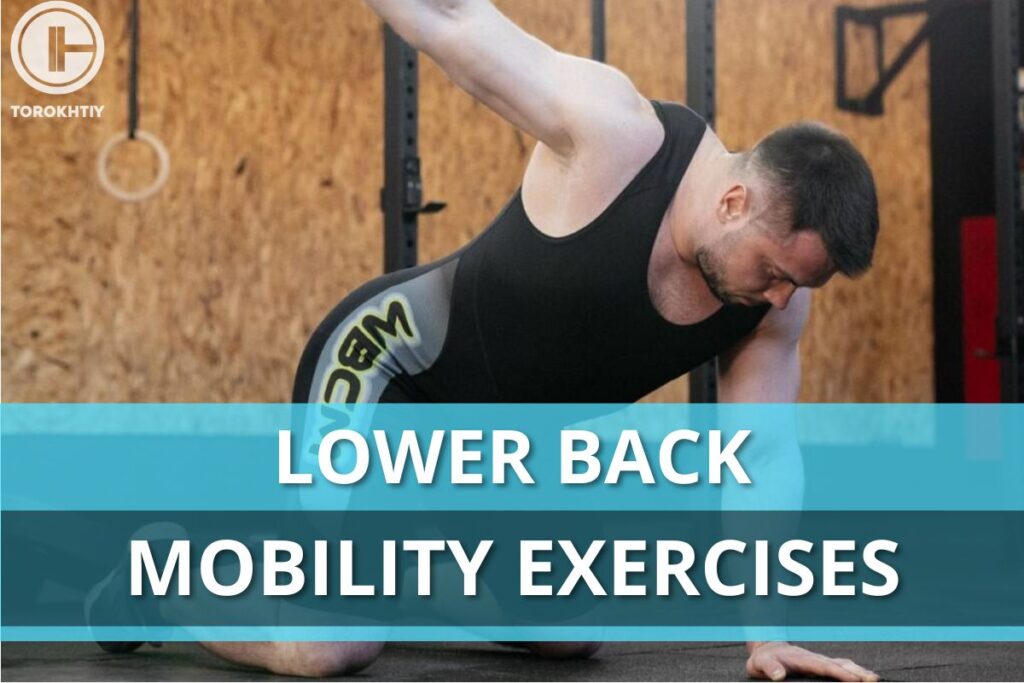
Why Is Lower Back Mobility So Important?
Low back mobility exercises are crucial both for short and long-term health and fitness. The lower back is a hotspot for spinal nerves and contains most of the human anatomy crucial for connecting your upper and lower body. Your lumbar spine is located in the lower back. It consists of five vertebrae – L1 to L5 – the largest of your entire spine.
Apart from providing structural support and protecting your spinal cord, these vertebrae support most of your body’s weight and are the center of your body’s balance. They also connect various tissues and ligaments necessary for full-body movement. These connections affect your everyday life, as they’re directly tied to activities like standing, walking, and running, not to mention more serious physical exercise.
Doing things like bending over to pick something up or raising your hands to reach a shelf all engage your lower back.
These are just some of the reasons why lower back and lumbar spine mobility are important.
Why Do You Need Lower Back Mobility?
Reduced Risk Of Injury
An immobile and stiff lower back is a hotspot for injuries. The lower back is a common place for sports-related injuries, but that’s not all. Something as simple as standing up too quickly, stepping unevenly, or loss of balance can lead to pain or injury with poor back mobility. Daily low back mobility exercises will prevent or at the very least minimize these issues.
Better Balance
As discussed, your lower back is the epicenter of balance in your entire body. A mobile lower back leads to better balance and quite literally helps keep you on your feet. Lumbar mobility exercises will have long-term benefits in our lives. Loss of balance increases as we age and is more common in senior citizens, and this can be attributed in part to lower back issues. As a result, 36 million people aged 65 or higher suffer injuries from falling each year in the U.S. alone.
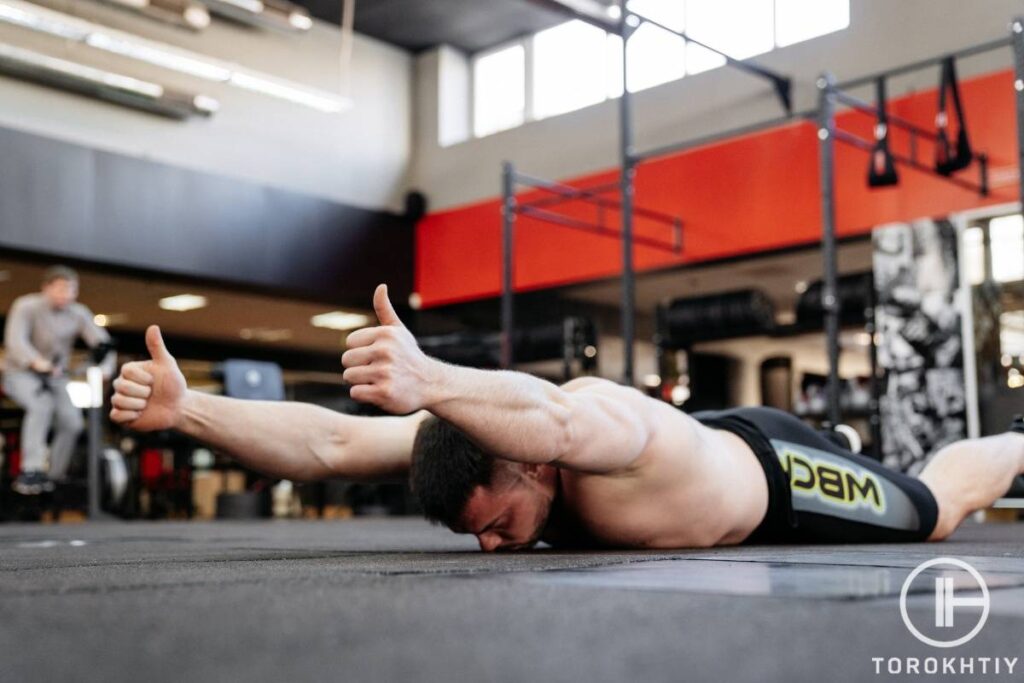
Improved Posture
The biggest problems we have with posture come from spinal issues. These problems can range from temporary issues such as tension from sitting down or sleeping unevenly, to long-term conditions such as abnormal spinal curvature AKA Scoliosis. As mentioned, the lower back contains the five largest vertebrae in your spine – a common place for Scoliosis to develop in today’s sitting-down culture.
Performing lower back mobility stretches will have lasting positive effects on your posture and improve spinal health.
Improved Daily Life
At the end of the day, our lower back is engaged in a large number of daily activities. It’s estimated that as much as 80% of adults will experience prolonged lower back pain (LBP) during their life. Being able to perform basic tasks like running, picking up objects, and bending down without pain improves our quality of life.
Follow us!

Free!
Get a 2-week Weightlifting Program as a bonus for the subscription to kickstart your training plan!

Free!
The Best Lower Back Mobility Exercises
Arguably the most important exercise for lower back mobility and mobility is regular stretching.
Stretches are a low-impact exercise that can be performed before or after your workout, or as a workout by themselves – such as Yoga.
Here are seven of the best lower back mobility stretches you can do at home, by yourself, without the need for workout equipment.
Cat-Cow Stretch
Also referred to as the Cat-Dog stretch. To perform the exercise, start on all fours with a straight bag. Using only your back, arch yourself towards and away from the floor. Lower the tоp of your head down to the floor as your back goes up, and raise it back and look forward as it goes down. Repeat 5 to 10 times in each direction in 1 to 3 sets, depending on your comfort and athletic level.
Remember to inhale and exhale as you switch from one position to the other, in whichever order is more comfortable for you.
Knee-To-Chest Stretch
This exercise is primarily done laying down, although advanced athletes with good posture and balance can perform it standing up as well. With your body fully straight from head to toe, bring one knee towards your chest and hold it there with your hands for a few seconds, maintaining upwards pressure. Release, switch legs, and repeat the process.
Depending on your athletic level, hold each leg anywhere from 15 seconds to one minute and either do one first followed by the other, or alternate between legs for your comfort.
Child’s Pose
Also known as the Balasana in Yoga. Start with your knees on the ground. Stretch your arms in front of you on the ground and start lowering your torso. As you do that, start moving your lower back backward until you sit on your knees. Your torso and head should end up at ground level, and your arms stretched above your head with your palms on the floor. Use your lower back to gently move your body backward until you end up sitting on your heels.
To stretch your back, it’s important to retain the tension from your arms to your heels by pushing back to your heels. Maintain this position for 15 seconds to a minute, depending on your comfort and athletic level.
Superman Exercise
Start by laying down on your stomach and extending your arms forward above your head, with your palms facing down. Slowly lift your arms and legs above the ground for about one foot or however high you can manage without issues.Throughout the exercise, keep the abdominal muscles tight. Do not bend your back or neck any more than your arms and legs naturally do. Hold the position for a second then slowly return back down.
Repeat 5-15 times in 1-3 sets depending on your comfort and athletic level.
Bridge Exercise
Start by laying down on your back. Bend your legs so that your knees point towards the ceiling. Keeping your full foot down, raise your hips until they line up with your shoulders and knees.
Repeat 5-15 times in 1-3 sets depending on your comfort and athletic level.
Kneeling Hip Flexor Stretch
Start with one knee on the floor and the other leg extended outwards and standing on the full foot. In the correct position, both of your legs will be forming a 90-degree angle. Slowly extend your hips forward towards your extended leg, arching your lower back. For a more advanced exercise, raise your arms above your head and slowly bend backward with your head looking up.
Maintain the position for 15 seconds to a minute depending on your comfort and athletic level. Repeat the process for both legs.
Sphinx Stretch
Start by laying down on your stomach. Your feet should be at about hip-width with your toes flexed and facing the ground. Extend your arms outwards with your elbows at about shoulder height. Looking forward, raise yourself upwards using only your back by balancing at the elbows, maintaining your lower body on the ground.
Once you reach your maximum, hold position anywhere from 15 seconds to a minute depending on your comfort and athletic level.
🔻Test Your Mobility Before Starting the Program
Mobility is crucial because it directly impacts your performance, technique, and overall safety.
Complete 3 simple tests to evaluate your current mobility.
Our Program Includes:
- 📺 80 Videos for every exercise:
Unique movements, supported by detailed graphics and voice-over. - 📆 36 Workouts x 30 minutes each:
12-weeks plan can be used as standalone program or as a pre-/post-workout training. - 📊 Tests to track you progress:
Make simple tests in the beginning and after finish to elevate your result. - 🏋️♂️ Made by Olympian:
Designed by a Champion, under the guidance of PhD in sport science and physiotherapist. - 💲One-time payment:
No monthly or any other recurring payments. One payment, life-time usage.
FAQ
How Do You Loosen Tight Muscles In Your Lower Back?
The best way to loosen tight muscles in your lower back is stretching. As discussed, there are various stretches for your lower back you can do by yourself at home without equipment. Other than stretching, regular exercise and general physical activity can help. For more serious lower back issues, heat or massage therapy can go a long way.
What Is The One Stretch That Relieves Back Pain?
Arguably the best stretch for relieving back pain is the Cat-Cow position. This exercise is very beginner friendly, doesn’t require equipment to perform, and is easy to control your maximum to avoid hurting yourself. The Sphinx stretch and Child’s Pose (Balasana) Yoga exercises are also good, though slightly more difficult to perform.
Is It OK To Squat With Lower Back Pain?
Squatting with lower back pain is not recommended if the source of pain is an injury. The exercise could feel difficult to do and could make your condition worse if you’re not careful. However, if the source of pain is injury-related, a modified squat exercise using a Safety Squat Bar can be beneficial, but it’s important to listen to your body signs and consult a doctor before attempting it.
Conclusion
Using these tips and exercises you will see improvement in your back in no time. Lumbar spine mobility isn’t just important for athletes, it’s crucial for better everyday life, especially as you age.
Do you perform lower back mobility exercises as part of your workout routine?
What’s your favorite exercise of the ones I’ve listed?
Also read:
- Shoulder Mobility Fitness
- Stretching for Fitness
- Upper Body Stretch
- Shoulder Mobility Exercises
- Tricep Stretches
- Trapezius Stretches
- 4 Week Squat Program
- 6 Week Squat Training Program
- Squat Program For Strength
References:
- Trends in Sedentary Behavior Among the US Population, 2001-2016 // JAMA Network: https://jamanetwork.com/journals/jama/fullarticle/2731178
- Lumbar Spine // Cleveland Clinic: https://my.clevelandclinic.org/health/articles/22396-lumbar-spine#
- Trends in Nonfatal Falls and Fall-Related Injuries Among Adults Aged ≥65 Years // CDC: https://www.cdc.gov/mmwr/volumes/69/wr/mm6927a5.htm
- The Rising Prevalence of Chronic Low Back Pain // National Library of Medicine: https://www.ncbi.nlm.nih.gov/pmc/articles/PMC4339077/
Why Trust Us?
With over 20 years in Olympic weightlifting, strength training, nutrition coaching, and general fitness our team does its best to provide the audience with ultimate support and meet the needs and requirements of advanced athletes and professional lifters, as well as people who strive to open new opportunities and develop their physical capabilities with us.
By trusting the recommendations of our certified experts in coaching, nutrition, and sports training programming, as well as scientific consultants, and physiotherapists, we provide you with thorough, well-considered, and scientifically proven content. All the information given in the articles concerning workout programming, separate exercises, and athletic performance, in general, is based on verified data.
The product testing process is described in more detail here.
Author: Zinaida Bondarenko
Coach, Physiotherapist
Physical rehabilitation experience: 10 years
Zinaida was a member of the national team of Ukraine in rhythmic gymnastics, accumulating 15 years of professional sports experience. She holds certifications in functional training, rehabilitation, kinesiotherapy, specializing in working with athletes across various domains: recovery, rehabilitation, functional and mobility training, General Physical Preparedness (GPP), as well as injury prevention through specific program design. Moreover, she focuses on athlete and coach education to enhance performance and prevent injuries.
Reviewed by: Oleksiy Torokhtiy
Olympic Weightlifting Champion, PhD in Sport Science
Best Results: Snatch – 200 kg,
C&J – 240 kg
Oleksiy Torokhtiy is a professional athlete boasting 20 years of experience in Olympic weightlifting. With multiple European and World titles under his belt, he has showcased his prowess in two Olympic Games (Beijing 2008 and London 2012). Upon concluding his illustrious career, Oleksiy dedicated himself to coaching. By 2022, he had conducted over 200 weightlifting seminars worldwide. He is the visionary behind an international sportswear and accessories brand known for its motto, “Warm Body Cold Mind.” Additionally, he is an esteemed author and the creator of a series of training programs and eBooks.

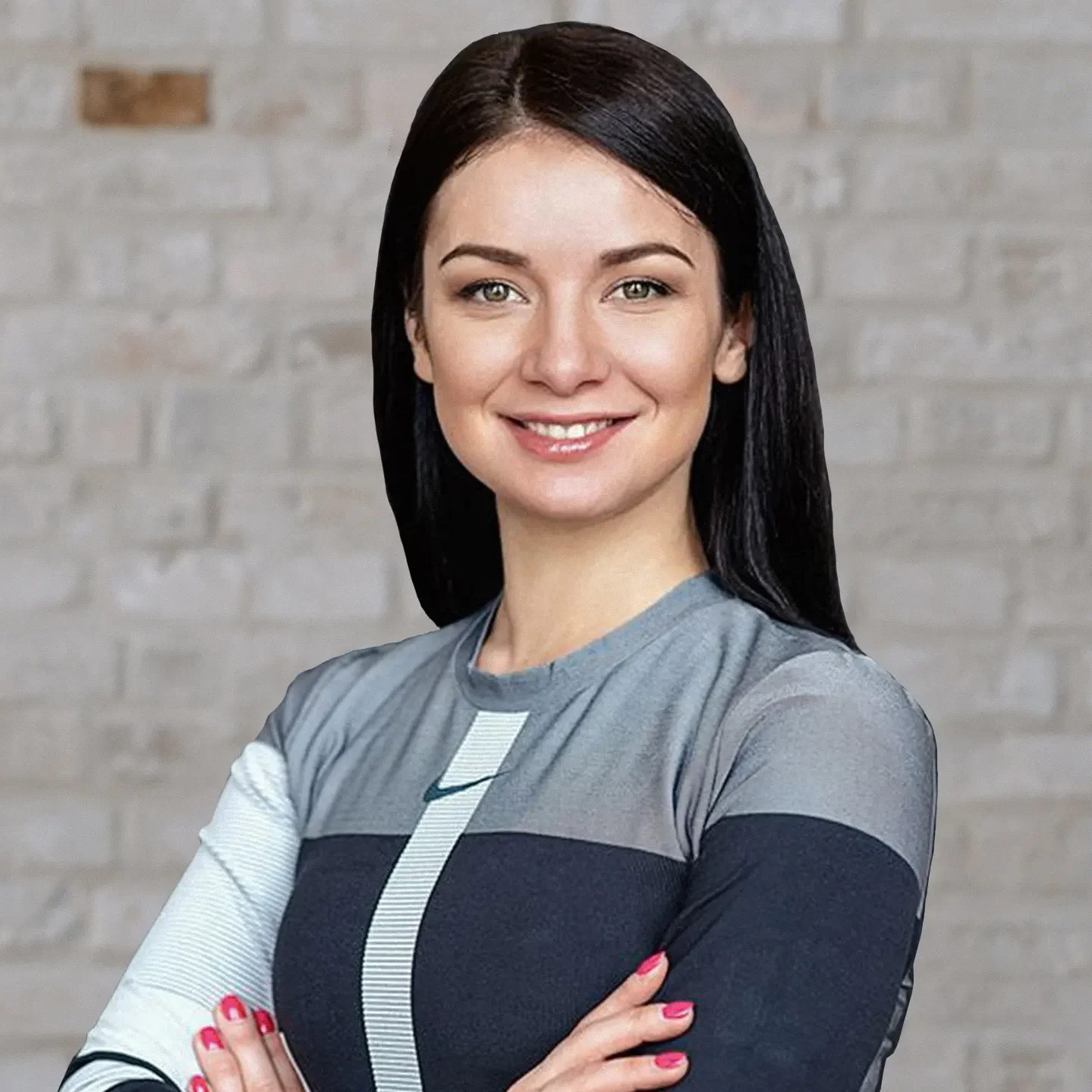


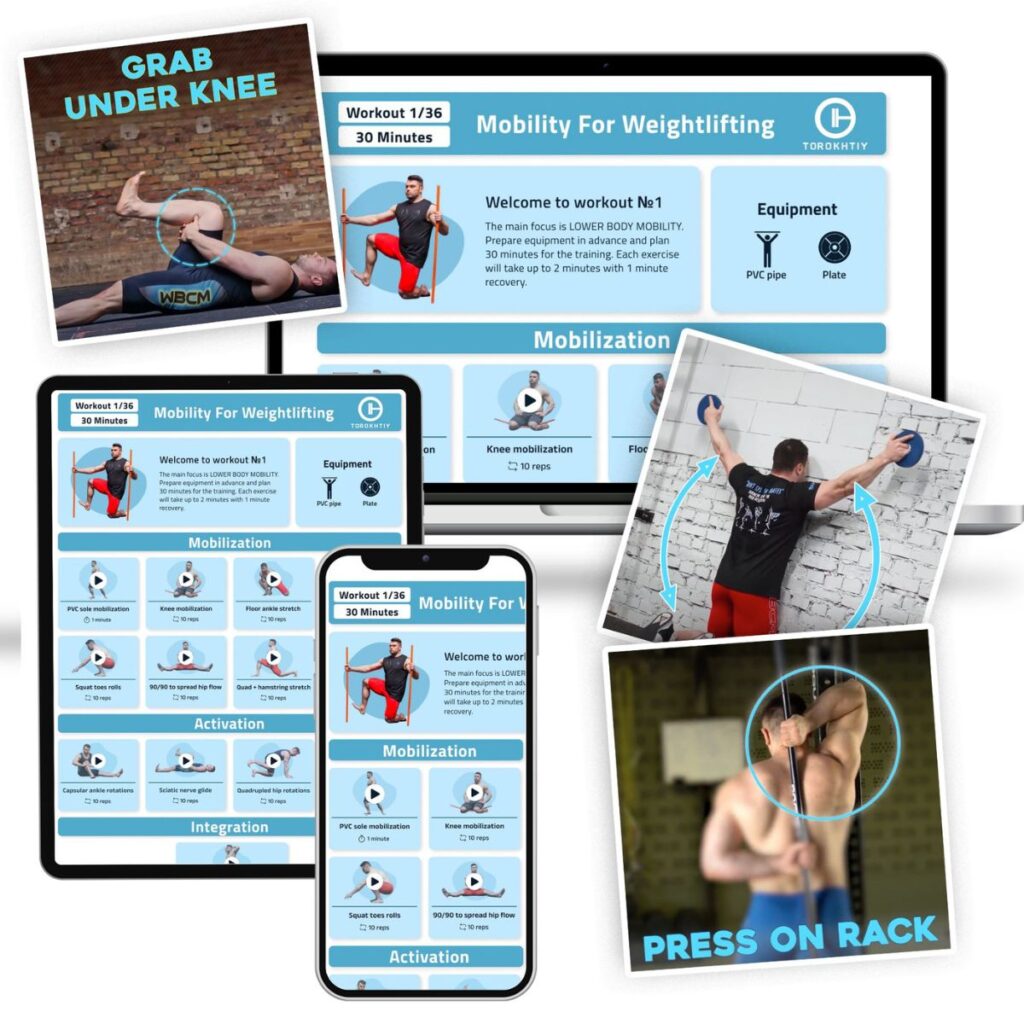
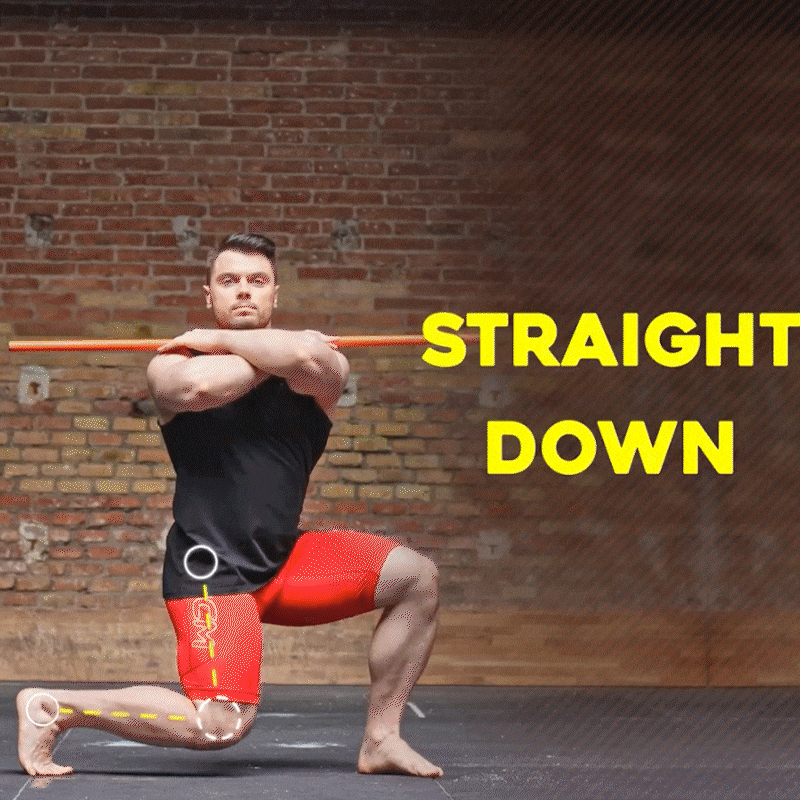
Still have questions after reading our article? Unlock your full potential by engaging with our experts and community! Don’t hesitate — leave a comment below and Zinaida Bondarenko will provide a personalized answer and insights to help you reach your goals.